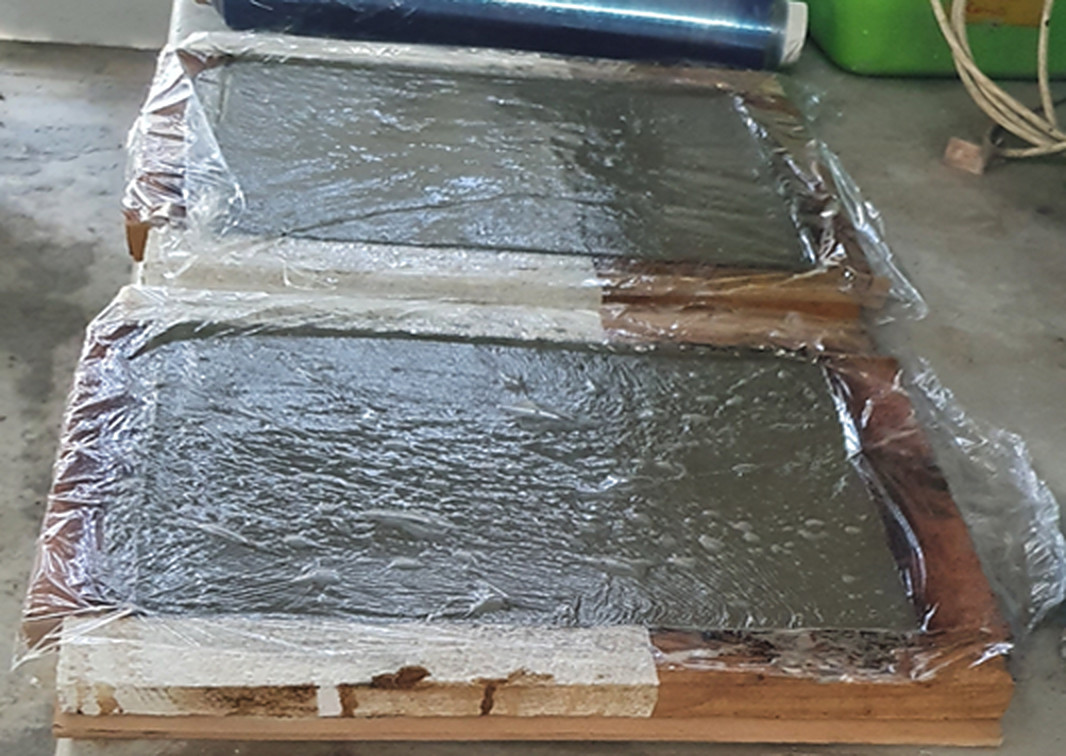Researchers from Australia’s Western Sydney University have created a reflective coating for solar tiles to reduce the operating temperatures of tiles by up to 11 C, while increasing their electrical performance by up to 6.6%.
“We are working with a local building product manufacturer with a research aim to develop solar tiles incorporating our technology,” researcher Zhong Tao told pv magazine. “We are very close to get funding with a total value of AUD 1 million ($648,760). The coating is close to commercial maturity, as we have used commercial products in our research. However, we believe further improvements can be made to the coating materials to improve their performance, which is part of our ongoing research.”
The scientists prepared mortar tile samples with a thickness of 27 mm and wrapped them with cling film and cured them for 48 hours before demoulding. They then stored the samples in a plastic wrap for 28 days prior to painting and used five commercially available reflecting coatings for their trials.
“The mortar samples were first painted with one layer of coating, following the instructions given by the manufacturers,” the scientists said. “After that, the samples were cured in an oven at a temperature of 25 C for 24 hours before applying the second layer of coating. Then the samples were cured in the oven again for a further 48 hours at 25 C.”
The researchers tested the tiles in a polystyrene control chamber equipped with a metal halide lamp. They found that the best-performing coating was able to limit the temperature of the tile to 63.6 C, while the worst-performing coating achieved 74.9 C.
“In the laboratory test, it was found that the reflecting coating could reduce the surface temperature by 11 C, leading to an electrical efficiency improvement of 6.61%; while in the natural environment test, the observed temperature reduction was 10 C, providing an electrical efficiency improvement of 6%,” said the group.
The academics described the coating tech in “Effect of reflective coating on thermal and electrical performances of solar roof tiles,” which was recently published in Energy Conversion and Management.
“Although a suitable reflecting coating can potentially improve the electrical and thermal performances of solar roof tiles during operation, further study is needed to evaluate the economic feasibility of the proposed system,” they said.
In 2020, the same researchers unveiled a phase-change material (PCM) with a cooling function for solar tiles. They built a PCM solar tile that reportedly provides 4.1% more power than a PV tile without a cooling agent. In its most recent study, it explained that the PCM could be combined with the reflective coating to further improve solar tile efficiency.
This content is protected by copyright and may not be reused. If you want to cooperate with us and would like to reuse some of our content, please contact: editors@pv-magazine.com.




By submitting this form you agree to pv magazine using your data for the purposes of publishing your comment.
Your personal data will only be disclosed or otherwise transmitted to third parties for the purposes of spam filtering or if this is necessary for technical maintenance of the website. Any other transfer to third parties will not take place unless this is justified on the basis of applicable data protection regulations or if pv magazine is legally obliged to do so.
You may revoke this consent at any time with effect for the future, in which case your personal data will be deleted immediately. Otherwise, your data will be deleted if pv magazine has processed your request or the purpose of data storage is fulfilled.
Further information on data privacy can be found in our Data Protection Policy.